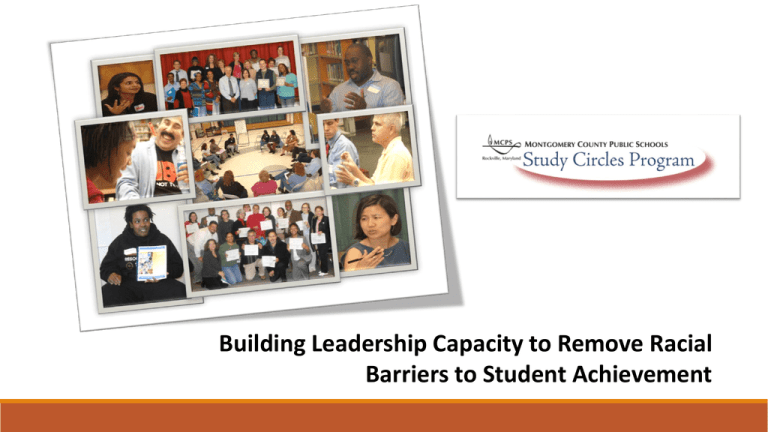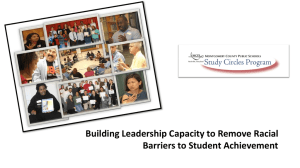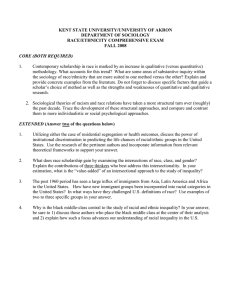Instructional Leadership Team Overview Handout 2
advertisement

Building Leadership Capacity to Remove Racial Barriers to Student Achievement Mission To identify and change the beliefs, practices, and policies that contribute to the achievement gap in Montgomery County Public Schools. 2 The next 6 slides include questions and responses from members of 9 different leadership teams. Answer the questions for your leadership team and compare to the others. 1. Racial, ethnic, and cultural differences among staff, students, and parents affect student achievement and parent involvement at this school. 96% of leadership team members agreed with this statement for their school. 2. Some staff members do not have the awareness and skills necessary to teach and develop relationships with African American and Latino students. 91.4% of leadership team members agreed with the statement for their school. 3. I am personally able to engage all students regardless of race, ethnicity, and culture. 41.2% of leadership team members agreed with the statement for their school. 4. The Leadership Team has the trust necessary to discuss racial and ethnic barriers to student achievement and parent involvement. 41.2% of leadership team members agreed with their school. 5. I have the skills, strategies, and confidence to lead my team in conversations about race, ethnicity, and culture. 25.6% of leadership team members agreed with the statement for their school. 6. The Leadership Team has the skills, strategies, and confidence to address teachers at the school who struggle to effectively teach African American and Latino students. 3.1% leadership team members agreed with the statement for their school. Goal of Leadership Teams Study Circles To become a high-functioning team that has the trust, structures, and confidence to close the achievement gap and ensure that all students are successful. 10 Our Approach Build the capacity of leadership teams to develop the trust and skills to: oEngage in honest and productive dialogue oHear a broad range of experiences and perspectives oIdentify and examine institutional barriers (beliefs, practices, and policies) oCollaboratively work to eliminate the barriers 11 Expected Outcomes Leadership Teams that have the trust and skills to engage in racially conscious conversations and decision making Strategies to engage the entire school community in eliminating institutional barriers Changes in practices and policies 12 Start with a 2-day retreat. Session 1 Session 1 v Create the trust and skills for honest dialogue. 14 Session 2 Session 2 Engage in honest dialogue about race and use a framework for understanding institutional barriers. 15 Ongoing Coaching Session during regular leadership meetings. Develop and implement a plan for addressing institutional barriers. 16 Click to hear principals explain the impact on Study Circles on their leadership teams. The video is 3 minutes. If it doesn’t open go to http://youtu.be/SWCUBaBX9g0 Outcomes from one school. AFTER THE FIRST YEAR WORKING WITH THE STUDY CIRCLES PROGRAM




